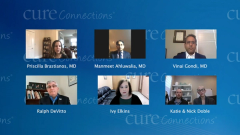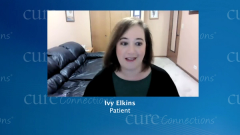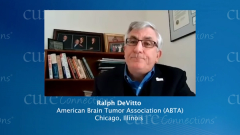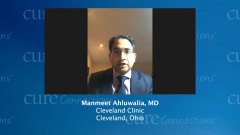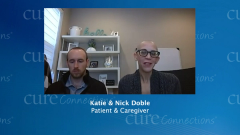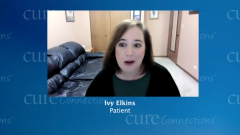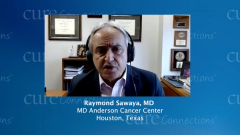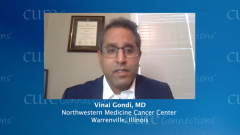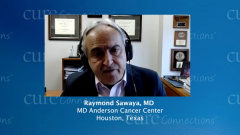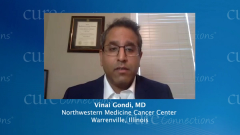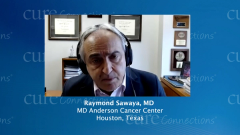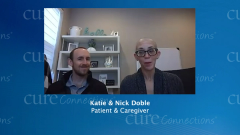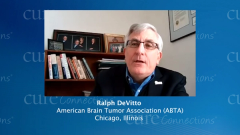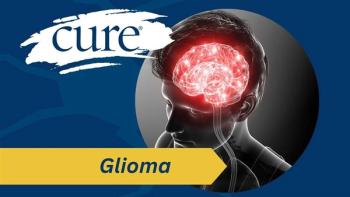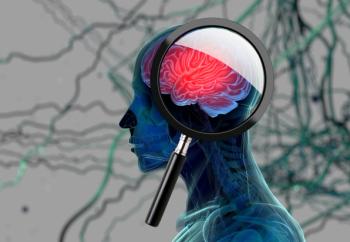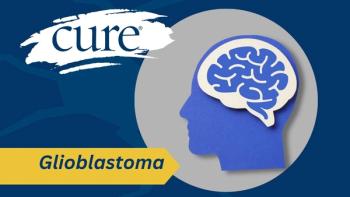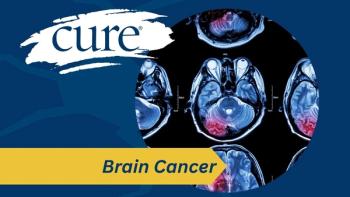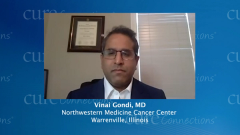
Ivy’s Journey With Stage IV Non–Small Cell Lung Cancer That Has Spread to the Brain
Priscilla Brastianos, MD: I want to turn to Ivy and Katie. A special thank-you to the two of you for sharing your deeply personal stories. For each of you, please share with us the journey from diagnosis that you have had with your cancer. Ivy, if you want to start, and then we’ll have Katie also share her journey.
Ivy Elkins: Sure, thanks so much for having me here to talk about my journey. I was diagnosed at the end of 2013, pretty much seven years ago, with stage IV non–small cell lung cancer. It was a diagnosis for me that came out of the blue. I didn’t have any known risk factors. Prior to my diagnosis, for about six months, earlier in 2013, I had some problems with my right elbow. I couldn’t completely straighten it, it hurt a bit, and I also had some trouble with the left side of my neck. It was a little painful—not horrible pain, but it was bothering me.
I eventually ended up going to my primary care physician, whom I had been seeing for a long time. I otherwise was very healthy and active. He thought that since I was in my 40s, it was just an overuse injury—I was using my computer too much, maybe not bouncing back the way I would have when I was younger. He sent me to physical therapy, and for about six months, I did different physical therapy exercises, I visited an orthopedist and had cortisone shots in my elbow, I went to a rheumatologist, and no one could really figure out why my elbow wasn’t getting better. They thought it was a condition called tennis elbow, and it just wasn’t responding to any normal treatment. Ironically, my neck started feeling a lot better, but no one really knows why that was the case.
Eventually, one of the orthopedists—I had seen two at this point—did an MRI of my elbow and found that there was a mass that had eaten away some of the bone. He didn’t really know what it was either. He sent me to an orthopedic oncologist, who basically took one look at me and said, “You know, the way you present and the way you appear, I’m telling you that otherwise, if you presented differently, I would look to see if this was a metastasis from a different type of cancer. But I am 95% sure this is a benign large cell tumor. Let’s do a biopsy, just make sure. I’ll take it out, and you’ll be all set.”
I remember going into that biopsy worried about how long it would be, if I had to have surgery, before I could drive again. I had that biopsy and the results came back that they were malignant as opposed to benign, as they had expected. And I was told that it was adenocarcinoma, but I had no idea what that was. That’s when I found out that adenocarcinoma doesn’t originate in the bone; it came from somewhere else in my body. I remember asking my orthopedic oncologist where it could have come from, and he said adenocarcinoma could come from your lungs or from your breast. I was sure I had breast cancer initially.
To make a long story short, I had a full work-up at that point, a PET [positron emission tomography] scan that identified the source of the cancer as my lungs. It had spread to my bones, neck, elbow, pelvis, and ribs, and I had eight small lesions in my brain, which was also found through a brain MRI. A lot of cancer, no symptoms other than the bone pain in my elbow and neck, no neurological symptoms, no coughing, no wheezing, no shortness of breath, nothing like that. I ended up having my biopsy tissue tested, and found out that I had a specific mutation called EGFR and was put on a targeted therapy for that, which I responded to extremely well. My brain metastases disappeared, my bone grew back in the areas where I had metastases, and my main lung tumor shrunk but didn’t disappear.
After three years on that targeted therapy, I had a little progression in my lung tumor. I had another biopsy and qualified for a new targeted therapy, which didn’t exist when I was first diagnosed, and I’m still on that to this day. My brain metastases never came back, and earlier this year I had surgery to remove my upper right lobe, because that was the area of my originating lung tumor, and it was the only area that still showed up as active cancer within my body. I had that removed, and I am considered NED, no evidence of disease. That’s my journey—probably not a short summary, but that’s my journey.
Priscilla Brastianos, MD: That’s incredible, Ivy. We’re keeping our fingers crossed that you’re going to continue to be NED. Wow, that’s incredible.
Ivy Elkins: Thank you.
Transcript Edited for Clarity


